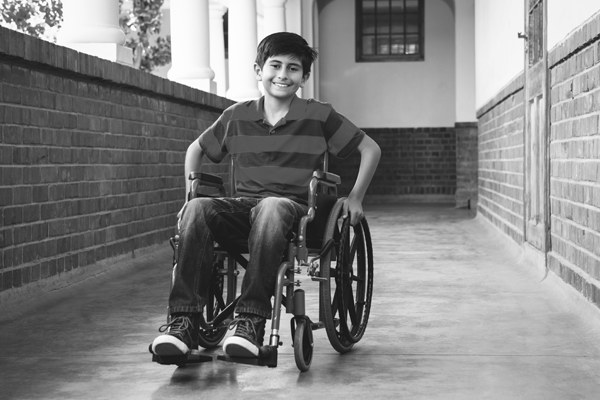Batten Disease Experts Publish Common Key Practices For Enzyme Replacement Therapy
Batten Disease Experts Publish Common Key Practices For Enzyme Replacement Therapy https://pediatricsnationwide.org/wp-content/uploads/2021/01/082614ds317-2-1024x683.jpg 1024 683 Lauren Dembeck Lauren Dembeck https://pediatricsnationwide.org/wp-content/uploads/2021/03/Dembeck_headshot.gif- January 21, 2021
- Lauren Dembeck

Neuronal ceroid lipofuscinosis type 2 disease is a rare, rapidly-progressing, neurodegenerative lysosomal storage disorder caused by tripeptidyl peptidase 1 deficiency. This form of Batten disease has an onset between two to four years of age. Children with CLN2 disease may experience intractable epilepsy, progressive cognitive and motor decline, and loss of vision. Historically, most children with CLN2 disease died between eight to 12 years of age.
In 2017, the enzyme replacement therapy cerliponase alfa, a recombinant human tripeptidyl peptidase 1 enzyme administered via intracerebroventricular infusion, was authorized as the first and only approved treatment for the disease. However, few institutions are experienced in administering this treatment due to the rarity of CLN2 disease.
“We are rewriting the natural history of this disease with this treatment,” says Emily de los Reyes, MD, director of the Nationwide Children’s Batten Disease Center of Excellence and attending an attending pediatric neurologist at Nationwide Children’s Hospital, “Nationwide Children’s Hospital was the only site in the United States for the pivotal trials that led to approvals of this novel therapy, and I’m very proud of the work we did.”
At a November 2018 meeting, health care professionals from US institutions with experience in CLN2 disease management developed a set of key common and flexible practices focused on safe chronic administration of cerliponase alfa. The practices were the refined and published in a report in Pediatric Neurology in May 2020.
“Now, we have practical considerations. When cerliponase alfa was approved, Nationwide Children’s was the only center administering it, but now, in the United States, there are 25 infusion centers treating 54 children with CLN2 disease,” says Dr. de los Reyes, who was first author of the publication and the US-based principal investigator for the enzyme replacement trials.
The key common practices cover seven areas: developing a dedicated multidisciplinary team, preparation and administrative processes, process development, choice of ICV device, ICV port access, ICV port replacement, and monitoring and management of potential infection.
“Our primary takeaway was that there needs to be seamless coordination of care for these children amongst this multidisciplinary team,” explains Dr. de los Reyes, who is also professor of clinical pediatrics and neurology at The Ohio State University College of Medicine.
The multidisciplinary team should include a dedicated team lead and coordinator and may include pediatric neurologists, biochemical geneticists, hematologist-oncologists, neurosurgeons, nurse practitioners, pediatric infusion center nurses, pharmacy infusion specialists, psychologists, and child life specialists among others. However, the size and composition of the team may be adjusted according to institution-specific needs and patient numbers.
The practice guidelines also emphasize careful consideration of the intracerebroventricular device to be implanted under the scalp. Some groups reported difficulty with flat-bottomed ports like Ommaya reservoirs , which prevent the base of the port needle from lying flush to the scalp and increase the risk of the needle becoming dislodged during the infusion. Infection monitoring and management are also detailed in the report.
“I think this article will be helpful for children from all over the world,” says Dr. de los Reyes. “These practices will probably be refined more in the coming years. The problems and complications are going to be different from what they were previously, but we are expecting these children to live longer and have a better quality of life.”
About the author
Lauren Dembeck, PhD, is a freelance science and medical writer based in New York City. She completed her BS in biology and BA in foreign languages at West Virginia University. Dr. Dembeck studied the genetic basis of natural variation in complex traits for her doctorate in genetics at North Carolina State University. She then conducted postdoctoral research on the formation and regulation of neuronal circuits at the Okinawa Institute of Science and Technology in Japan.
-
Lauren Dembeckhttps://pediatricsnationwide.org/author/lauren-dembeck/
-
Lauren Dembeckhttps://pediatricsnationwide.org/author/lauren-dembeck/
-
Lauren Dembeckhttps://pediatricsnationwide.org/author/lauren-dembeck/
-
Lauren Dembeckhttps://pediatricsnationwide.org/author/lauren-dembeck/January 29, 2019
- Post Tags:
- Neurology
- Posted In:
- Clinical Updates
- In Brief
- Research







